Ongoing:
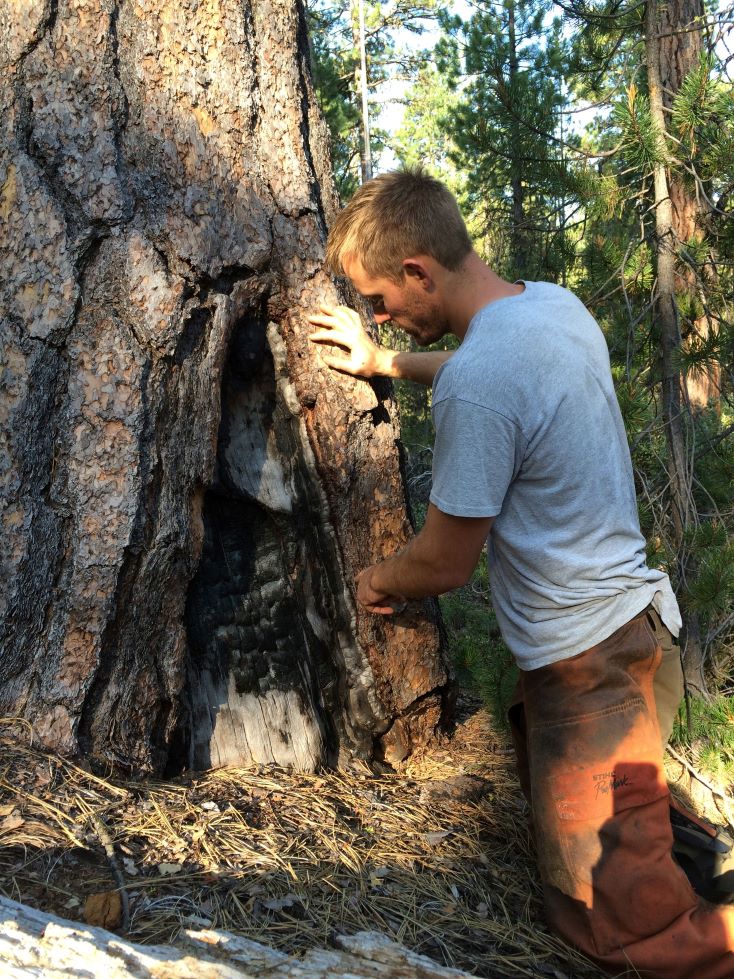
Using Historical Forest and Fire Dynamics to Guide Fire Resilience Across Dry to Moist Forests on the Mt. Hood Wildfire Crisis Priority Landscape
The TRL is collaborating with the Mt. Hood National Forest and their partners to design, implement, and provide science delivery for a new dendrochronological (i.e., tree ring) reconstruction of historical fire regimes and forest dynamics on the Mt. Hood National Forest. This project will inform ecologically appropriate strategies to promote fire resilience for different forest types and biophysical settings across the newly designated Mt Hood wildfire crisis strategy (WCS) landscape. Coproduction and collaboration with the Mt. Hood National Forest and their partners will ensure the research provides guidance in priority forest types and landscape areas. A shared learning approach will increase consensus surrounding ecologically appropriate management actions and the quality and pace of their implementation.
Contact: Andrew (andrew.merschel@oregonstate.edu) and Amanda (amanda.brackett@oregonstate.edu)
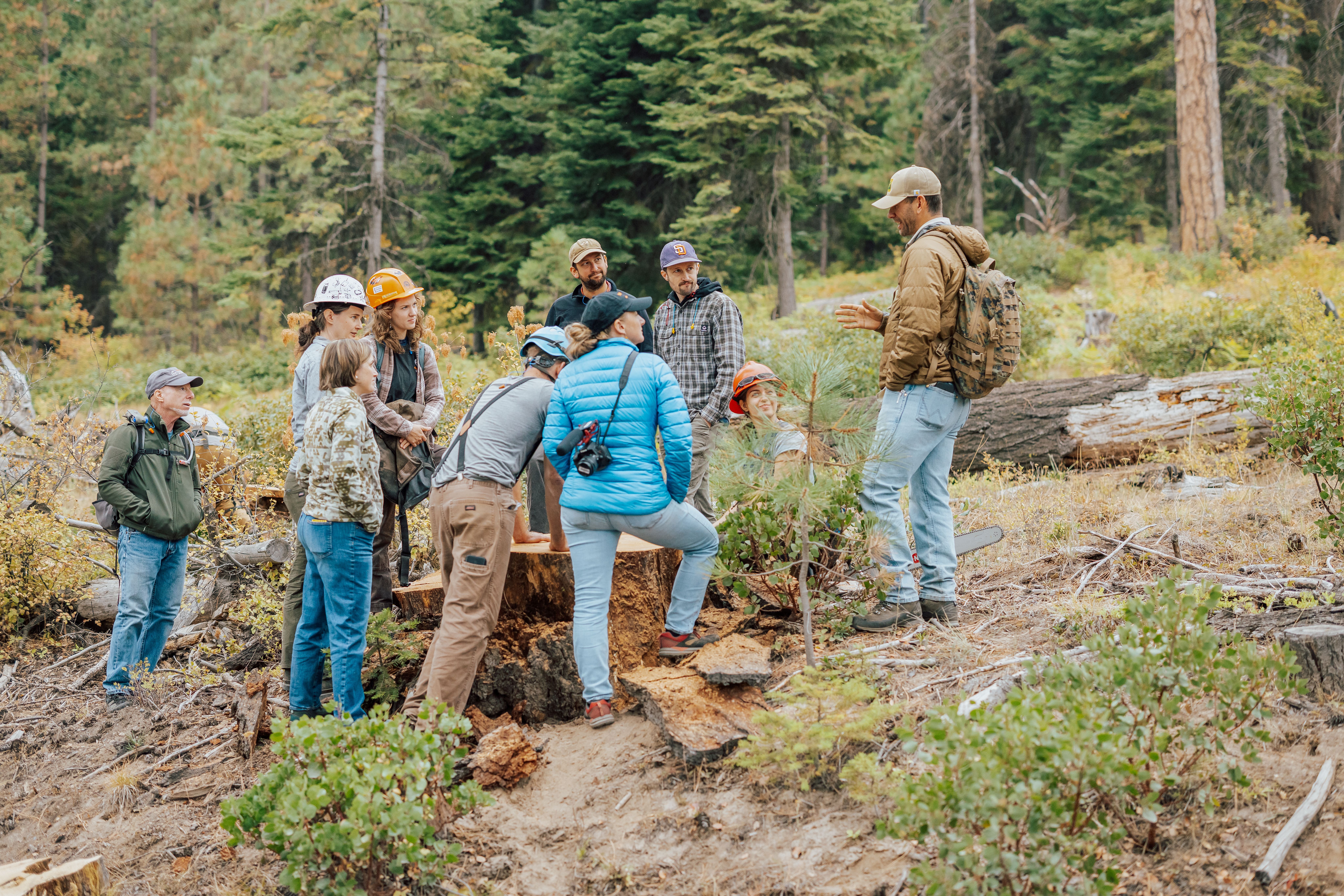
Engage Mt. Hood: Science Communication and Community Collaboration
In collaboration with several partners we aim to provide a shared understanding of tree ring research methods and the information they provide on historical fire regime, forest conditions, and dynamics on the Mt. Hood national forest. As part of her M.F. program Maddie will lead the development of media delivery and science communication to the Mt. Hood National Forest and their partners. These will then be used to help inform future decision making. Partners include OSU Extension Fire Program, Hood River Forest Collaborative, the Wasco County Forest Collaborative, the Confederated Tribes of the Grand Ronde, the Confederated Tribes of the Warm Springs, and the Mt. Hood Corridor Wildfire Partnership
Contact: Maddie (washbrum@oregonstate.edu) and Adnrew Merschel (andrew.merschel@oregonstate.edu)
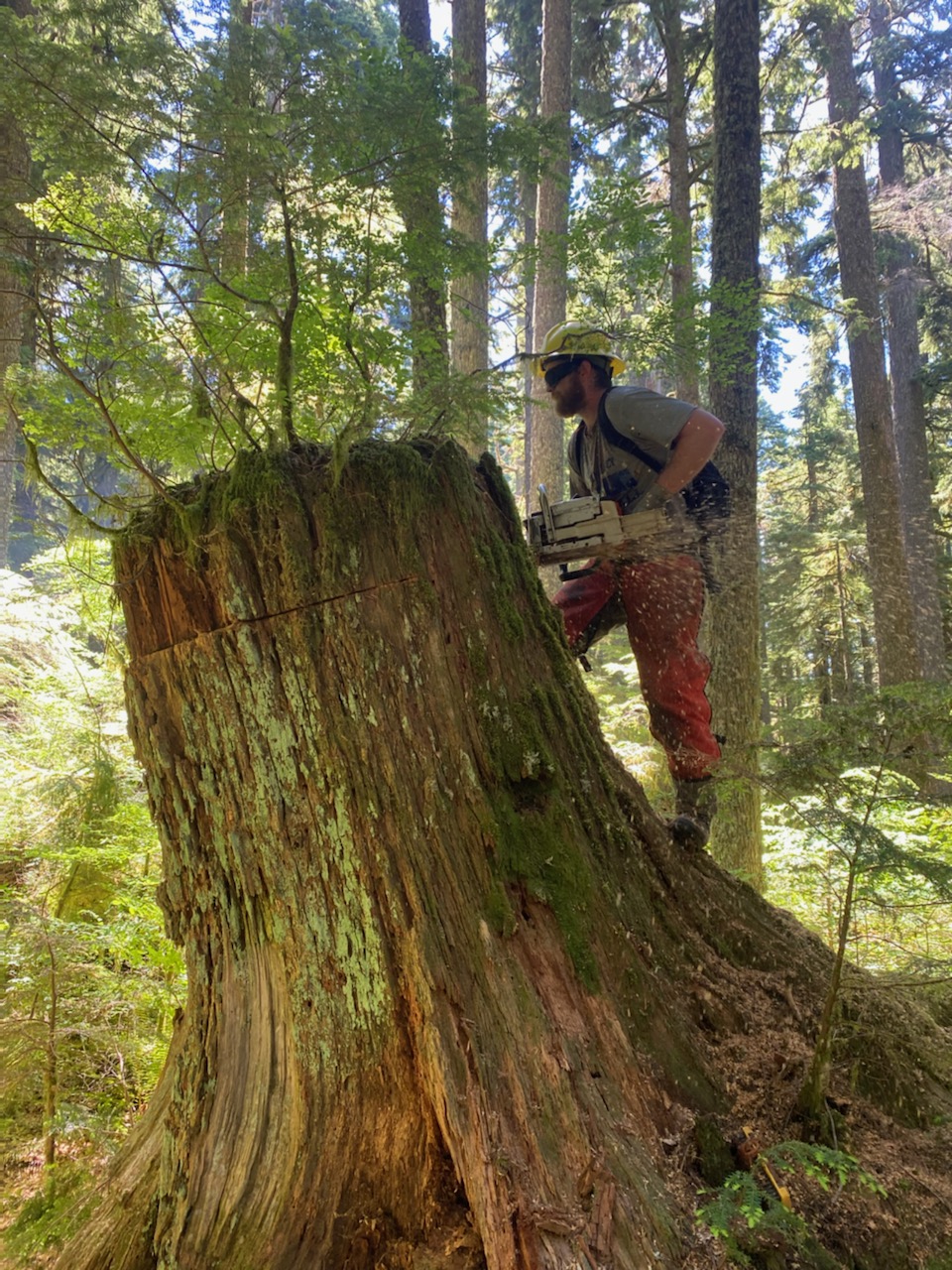
Fire and successional histories of mature and old-growth forests in the western cascades:
Contact: Andrew Merschel (andrew.merschel@oregonstate.edu)
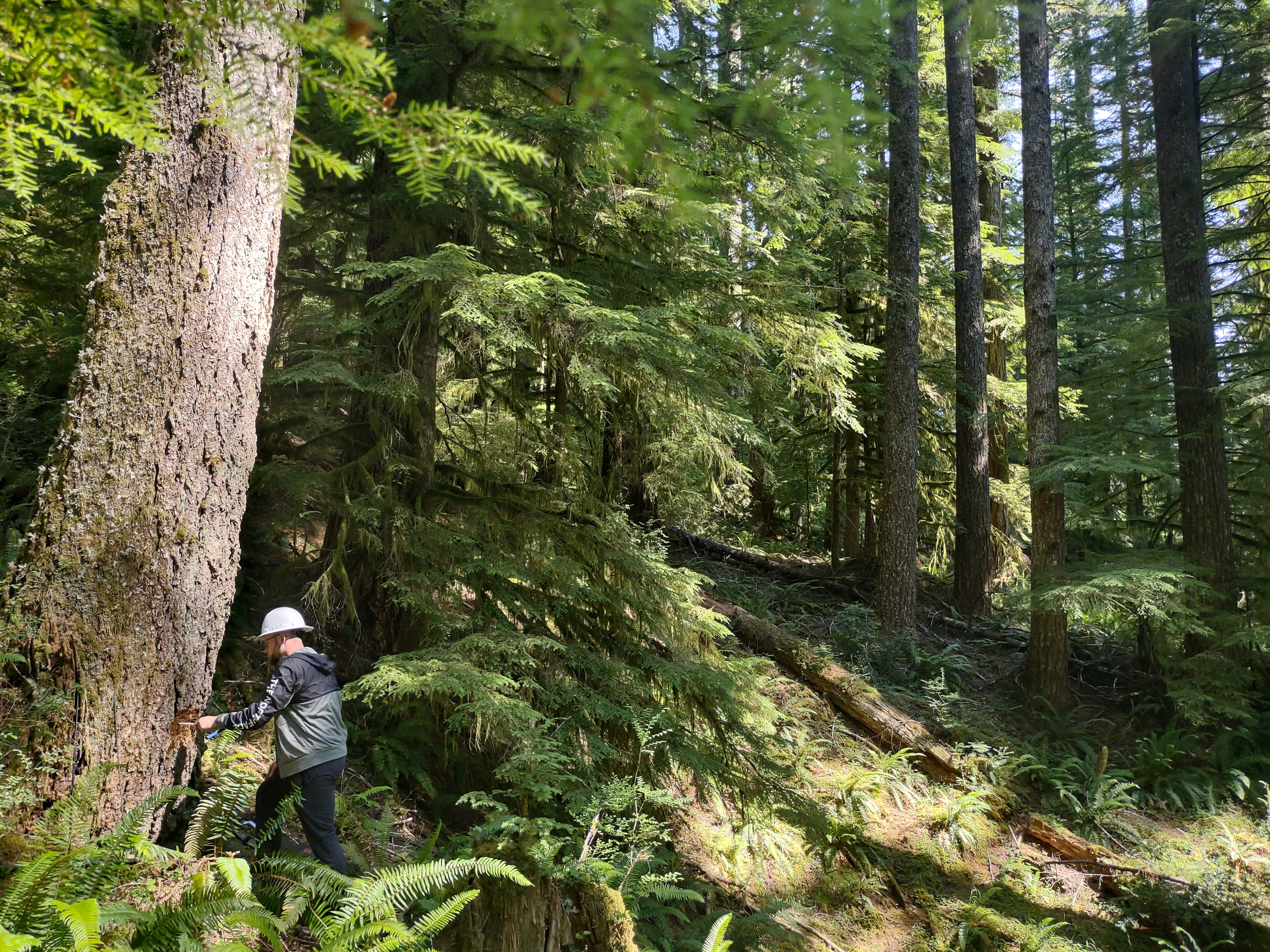
Fire and Successional Histories of Marbled Murrelet Nesting Habitat:
Marbled murrelet are known as “a bird of two worlds” because they forage on baitfish in the Pacific Ocean and nest up to 80 km inland in trees with large crowns. Although murrelets are threatened or endangered throughout most of their range, we have much to learn about their habitat needs and what forest conditions must be restored to provide for their recovery. The Tree Ring Lab is providing critical information on the development history of murrelet nest stands at 29 nest sites identified through the Oregon Marbled Murrelet Project. At each site we are coring 20 trees to characterize their ages and development history, and we are removing cross sections from dead trees to investigate how fire, wind, and other disturbances shaped contemporary conditions in nest stands. Early results have already identified that most nest trees are much younger than previously thought. This research has tremendous potential to expand north and south along the Pacific Coast.
Contact: Jenn Bailey Guerrero (jennifer.guerrero@oregonstate.edu)
The McDonald-Dunn Fire History Project:
The McDonald-Dunn Fire History Project seeks to determine the historical patterns of fire occurrence and the effect that these events have had on the structure and composition of old-growth Douglas-fir stands on the College Forest. By using cross-sections from fire-scarred stumps, and tree ages from the reserves themselves, we hope to create as complete a record of fire events as possible from the oldest legacy features. While the McDonald-Dunn is one of the most heavily studied, exhibited, and visited forests in the State, no rigorous dendrochronological methods have yet been applied from which accurate estimates of tree age and fire frequency are possible. We hope to make an important contribution to the natural and cultural history of the Willamette Valley by providing qualitative and quantitative descriptions of old-growth reserves, as well as a first look at the historical disturbance regime.
Contact: Charles Drake (charles.drake@oregonstate.edu)
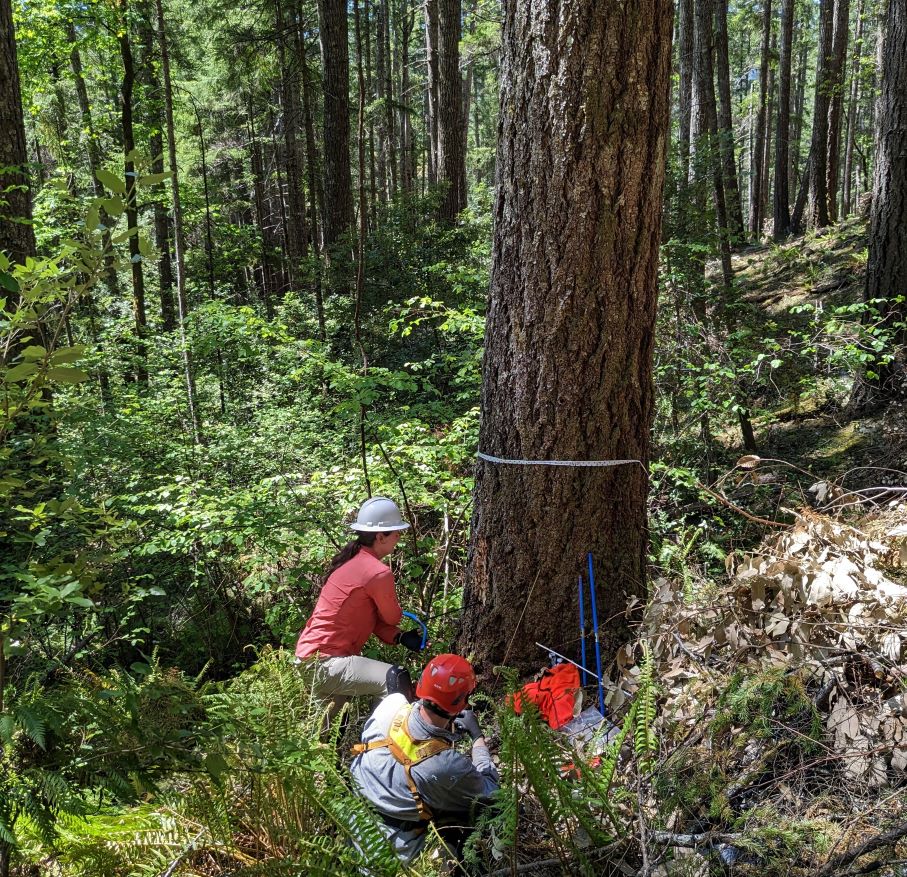
Rogue Basin Historical Forest Conditions:
This project seeks to accelerate the quality, pace, and scale of forest restoration in the Rogue Basin of southwestern Oregon. Using previously collected forest stand data and tree cores we hope to describe historic forest structure and composition across the diverse forest types of the region. Specifically, we are interested in estimating historic basal area of tree species as well as the spatial distribution of trees prior to colonization and fire suppression. Understanding these historical conditions will inform collaborative restoration treatments to promote resilient forests. Partners: Southern Oregon Forest Restoration Collaborative, The Nature Conservancy, Lomakatsi Restoration Project, BLM, Rogue Forest Partners, USFS.
Contact: Sven Rodne (sven.rodne@oregonstate.edu)
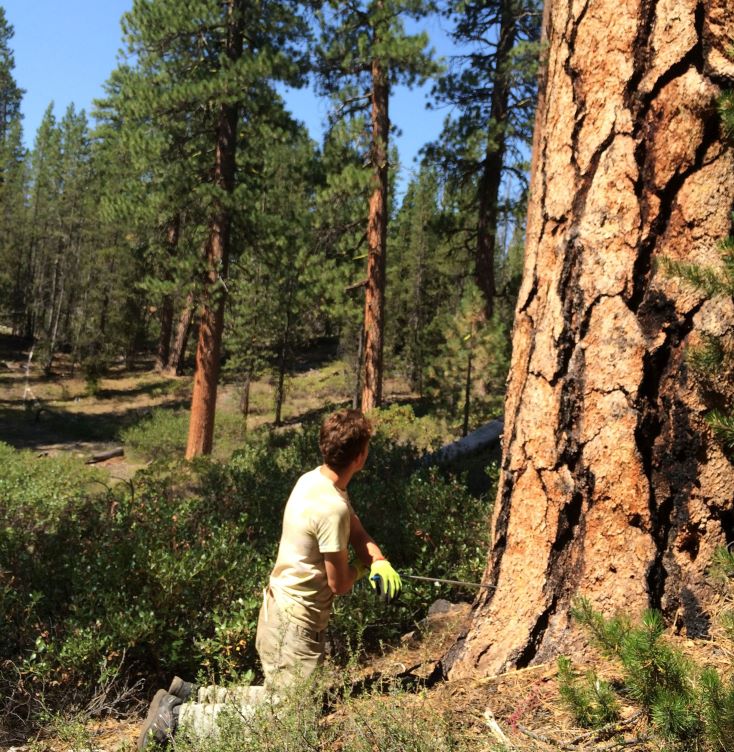
Facilitating Conservation of Mature and Old Trees in Eastern Oregon:
The primary goal of this project is to provide managers and stakeholders with the information necessary to conserve mature and old trees in eastern Oregon and to build social consensus for restoration treatments. Using long-term monitoring data we will establish baseline status and trends of mature and old-growth trees; determine the landscape settings and disturbance histories that make mature and old-growth most vulnerable; and describe thinning and other treatments that are associated with the persistence of mature and old trees. Partners: Blue Mountains Forest Partners, Harney County Forest Restoration Collaborative, Northern Blues Forest Collaborative, USDA Forest Service, Oregon Department of Forestry.
Contact: Amanda Brackett (amanda.brackett@oregonstate.edu)
Past:
Middle Fork Willamette Indigenous Fire Stewardship:
We are working with tribal members, archaeologists, and ethnographers to document hundreds of years of fire stewardship in the upper reaches of the Willamette River. Partners: Southern Willamette Forest Collaborative, University of Oregon.
Contact: James Johnston (jamesjoh@uoregon.edu)
Guest blog for Southern Willamette Forest Collaborative
Fire and forest development histories from the Upper Umpqua River:
This study evaluated the combined use of interannual fire scar and tree cohort data to characterize historical fire regimes and forest dynamics in Douglas-fir forests of the Pacific Northwest. The results provide a nuanced understanding of disturbance-succession dynamics for the Umpqua National Forest, context for applying rigorous dendrochronological methods to the broader Douglas-fir region, and will inform policy and management of Douglas-fir forests into the future.
Lower Umpqua River drainage fire and succession:
Reconstructing historical fire severity, extent, and fire influence on stand development on the Elliott State Forest and surrounding Tribal, Forest Service, BLM, and private ownerships. Partners: OSU College of Forestry, Confederated Tribes of the Coos, Lower Umpqua, and Siuslaw Indians.
Midcoast Watershed Council Presentation
Elliott State Forest Research Plan
Tree age tools for managers:
Developing tools to allow mangers to accurately estimate the age of different tree species in eastern Oregon to facilitate restoration treatments. Partners: Blue Mountains Forest Partners, Malheur National Forest
Article in Journal of Forestry
Southern Willamette fire history:
Reconstructions of historical fire in the southern end of the Willamette National Forest to inform collaborative restoration efforts. Partners: Southern Willamette Forest Collaborative, Oregon Department of Forestry.
Exceptional variability in historical fire regimes across a western Cascades landscape
Historical Fire Regimes and the Impacts of 20th Century Land Use Practices on Dry Forest Ecosystems in Central Oregon
The Tree Ring Lab collaborated with the Deschutes and Ochoco National Forest and the Deschutes Collaborative Forest Project (DCFP) to develop a better understanding of how dry forests have been impacted by fire exclusion, logging, and grazing. A shared understanding of changes in forest structure and composition and decreased resilience to wildfire, drought, and insects was used by the DCFP to develop zones of agreement for restoration and management of lodgepole pine, ponderosa pine, and mixed-conifer forest types.
Science Findings-Reality Check: Shedding New Light on the Restoration Needs of Mixed-Conifer Forests
Mixed-conifer forests of central Oregon: effects of logging and fire exclusion vary with environment
